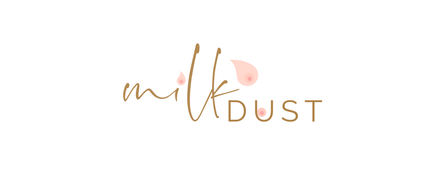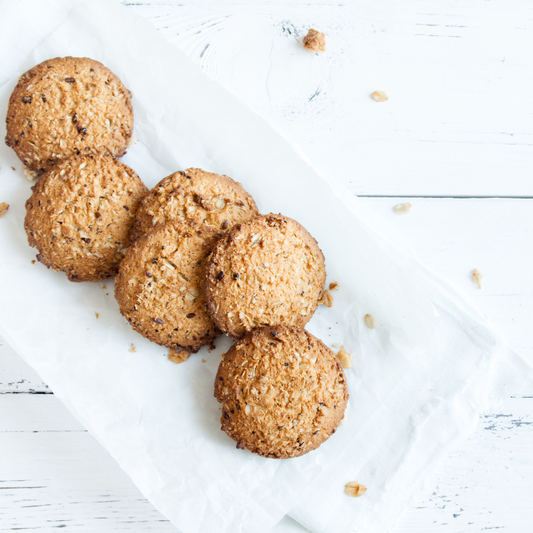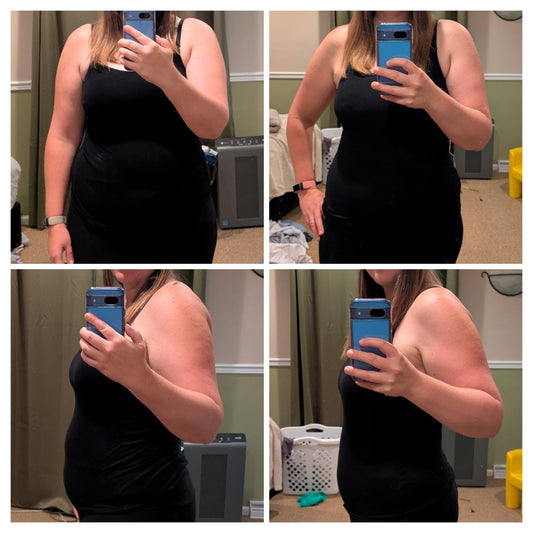Andrea Tran RN, BSN, MA, IBCLC
The birth of a baby is a joyous event. It can also be, quite literally, a pain. Many areas of a new mother's body may experience pain after childbirth. Of course none of the pain is as bad as labor and birth itself. If you are pregnant and getting ready for postpartum, make sure to pack your Milk Dust Bars and a sample pack of Milk Dust in your bag! As a nurse, I know the extent of hospital food, which can be less than nourishing. Milk Dust is an amazing product that you can take with you to the hospital, and keep with you postpartum to ensure you are nourishing yourself properly for healing and milk supply.
I'll discuss the different types of pain you might experience in the days and weeks after giving birth. I'll talk about what is expected and what you can do to be more comfortable. I will also let you know when you should call your doctor.
Uterine Cramping
The uterus is an amazing organ. When you are not pregnant, it is about the size of your fist. It can grow to be able to accommodate a baby.
After birth, it contracts down to the size it was midway through your pregnancy, right around your belly button. It has to contract to control the loss of blood and help it return to its size before pregnancy.
These postpartum uterine contractions are called afterpains. They vary in intensity. They may feel like mild cramps, or they may require you to do some of the same deep breathing you used during labor.
Breastfeeding can make the cramping worse because it stimulates your body to release oxytocin to cause the let-down reflex. Oxytocin is the same hormone that caused you to have contractions during labor
The nurse will check your uterus every so often to make sure it is staying hard. If it is not as hard as she likes, she may massage your uterus. That can be uncomfortable. I always encouraged new moms to gently massage their uterus to help keep it contracted.
What Helps Afterpains?
Your doctor or midwife may have ordered some pain medication for severe cramping. Ibuprofen is another medication that is frequently given to new moms for afterpains.
A heating pad on your abdomen can make you more comfortable.
Keeping your bladder empty can help decrease the intensity of the after pains as well, so make sure you are using the bathroom frequently.
Perineal Soreness
Another common area that can cause postpartum pain is your perineum.
It used to be routine for a woman to receive an episiotomy – a cut into her perineum - during childbirth. They are done less frequently now, but still, about ten percent of women will have an episiotomy. A larger number of women will have some kind of perineal tear. Either way, this will result in perineal pain.
Even if a woman doesn't have any stitches, she can still experience some perineal soreness.
Help For Perineal Discomfort?
Ice packs applied to the perineal area for 15-20 minutes at a time will provide relief. This is recommended for the first 24-hours.
Starting the second postpartum day, taking a sitz bath is usually soothing to the area. The hospital may provide you with a portable sitz bath. You can buy one at a pharmacy or online.
Using an inflatable donut cushion can make sitting more comfortable.
Witch hazel pads applied to the perineal area will provide some comfort for the swelling and pain.
If your bottom is really sore, breastfeeding in the side-lying or laid-back position is the most comfortable position.
Hemorrhoids
Another thing that can make your bottom sore is hemorrhoids. These are swollen veins in your anus and rectal area. They can be external or internal. Whether you can see them or not, they are uncomfortable.
The witch hazel pads can provide relief for painful hemorrhoids as well as perineal pain. There are also creams and suppositories that can be applied to hemorrhoids that contain hydrocortisone, which will lessen pain and irritation.
Constipation
A common concern of women in the days after they have given birth is whether having a bowel movement will hurt.
The iron in your prenatal vitamins can cause constipation. Pain medication that has narcotics is another culprit.
Fear of pain from a bowel movement can be another contributing factor.
Remedies for Constipation
- Drink lots of fluids
- Eat lots of fiber or take a fiber supplement
- Your healthcare provider may prescribe you a stool softener
- Stool softeners are also available over the counter
Breast and Nipple Pain Postpartum
Sore Nipples
Many women complain of nipple discomfort in the days and weeks postpartum. While most will experience tenderness that goes away within a couple of weeks, other mothers will struggle with cracks, bleeding, or blisters.
Pain in the first few seconds after your baby latches on is not cause for concern. It usually resolves on its own. Using good positioning and latch technique goes a long way to feeling more comfortable.
However, any signs of trauma like cracked nipples, bleeding nipples, or blisters indicate you need a lactation consultant.
Breast Engorgement
When your milk comes in around two to four days after the birth, you may experience breast engorgement.
A woman's breasts can increase in size dramatically in a relatively short period of time when her milk comes in. Initially, that is primarily due to swelling of the breast tissue surrounding the milk-making parts of the breast.
What Helps Breast Engorgement?
Applying ice packs for 15-20 minutes will help decrease the swelling and provide comfort. Ibuprofen can also help
While some people still recommend hot showers or hot packs to help with engorgement, it can make engorgement last longer or worsen the swelling's severity.
It is essential to keep the milk moving by frequent breastfeeding and pumping if your baby is not keeping up with your growing milk supply.
Typically, engorgement only lasts 12-48 hours. Occasionally, an unlucky mom will find it lasts as long as a week or two.
Incisional Pain From a Cesarean Section
Moms who give birth by cesarean section will experience pain at their incision. A c-section is major abdominal surgery, and they have to cut through several layers of tissue to get to the uterus.
Your doctor will prescribe pain medication to help relieve this type of postpartum pain. It will most probably be a narcotic. It is safe to breastfeed when you take these medications.
Postpartum Pain That Can Be a Warning Sign
Certain types of pain experienced during the postpartum period warrant a call to your doctor.
-
Leg pain can be a symptom of a deep vein thrombosis (DVT).
- Pain is usually in one leg only.
- There may be swelling in the leg.
- The leg may be reddened and warm to the touch.
- Headaches can be a symptom of pre-eclampsia.
- Painful urination often indicates a urinary tract infection.
-
Symptoms of a breast infection called mastitis
- A lump in the breast accompanied by redness and pain
- Flu-like feeling
- Fever
Although there are many types of discomfort in the postpartum period, most are short-lived. Try the remedies suggested and call your healthcare provider if you are not getting any relief or you have any concerns.
Don't forget to nourish yourself well after birth! You can help your body heal faster by giving it the proper nutrients, many of which are found in Milk Dust products!



